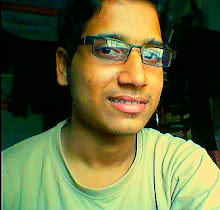Sarat Chandra Chattopadhyay was born on 15th September 1876, in Debanandapur, Hooghly, India. His family was occasionally supported by other family members and Sarat Chandra's lack of financial stability would influence his writing in years to come. He started his education at "Pyari Pandit"s" pathshala and then he took admission at Hooghly Branch High School. Although he began as a fine arts student, Chattopadhyay left his studies due to his persistent state of poverty. He received his early education while residing at his maternal uncle's house in Bhagalpur. He spent 20 years of his life in Bhagalpur and a significant portion of his novels were either written in Bhagalpur or based on his experience in Bhagalpur.
Sarat Chandra Chattopadhyay, had a varied career. He started of being an Assistant Settlement officer, in the Baneli Estate. Subsequently, he worked in Calcutta High Court as a Translator and thereafter, as a Clerk in the Accounts Department in Burma Railway. He was also a member of the Bengal Congress and took part in the Non-Cooperation movement. He was later appointed the President of Howrah District Congress.Sarat Chandra Chattopadhyay is considered to be an author, who understood the Bengal villages the best. His works have a rural essence, as it speaks of the simple day to day life stories of the families, living far away from the cities in the tranquility of nature, growing old among the rivers, trees and farm lands. He wrote of the women very highly and talked about their situation in a patriarchal society frankly and honestly. He voiced his protest against the social discrimination, injustices and superstitions that went on in the name of religion.
His first novel 'Badadidi'(1907), made him instantly popular among the readers. 'Bindur chhele'(1913), 'Parinita'(1914), 'Baikunther will'(1916), 'Devdas'(1917), 'Srikanta'(Part I-IV, 1917-1933), 'Charirtrahin'(1917) are few of his other popular novels. His novel 'Pather Dabi' (1926), was however, banned by the British government for its revolutionary theme. For children he wrote a series of stories and novels, which include the popular 'Ramer Shumati' and the short stories about 'Lalu and his friends'. A large number of successful films have been made and are still made on his stories, namely, 'Devdas', 'Parinita', 'Srikanta' and so on.
He received several awards for his contribution to Bengali Literature. 'Kuntalin puraskar'(1903), 'Jagattarini Svarna Padak'(1923), membership of 'Bangiya Sangeet Parishad'(1934) and an honorary D.litt by the Dhaka University in the year 1936.
Sarat Chandra Chatterji first married Shanti Devi in 1906 and had a son in 1907. However, both his wife and son succumbed to plague and died in 1908. To fill his disastrous and miserable life, he indulged himself into studying sociology, politics, philosophy, health sciences, psychology, and history from books borrowed from Barnerd Free Library. To add to his depression, he was advised to cut short his study hours due to health issues in 1909. As such, Sarat discovered a new interest in painting, his first being Ravan-Mandodori. His second marriage took place in 1910 to an adolescent widow Mokshada, who was later renamed as Hiranmoyee.
Sarat Chandra Chatterji, popularly known as the Immortal Wordsmith throughout Bengal, died on January 16, 1938 in Park Nursing Home, Calcutta. He was suffering from liver cancer. The entire Bengal mourned his death.
Sarat Chandra Chattopadhyay, had a varied career. He started of being an Assistant Settlement officer, in the Baneli Estate. Subsequently, he worked in Calcutta High Court as a Translator and thereafter, as a Clerk in the Accounts Department in Burma Railway. He was also a member of the Bengal Congress and took part in the Non-Cooperation movement. He was later appointed the President of Howrah District Congress.Sarat Chandra Chattopadhyay is considered to be an author, who understood the Bengal villages the best. His works have a rural essence, as it speaks of the simple day to day life stories of the families, living far away from the cities in the tranquility of nature, growing old among the rivers, trees and farm lands. He wrote of the women very highly and talked about their situation in a patriarchal society frankly and honestly. He voiced his protest against the social discrimination, injustices and superstitions that went on in the name of religion.
His first novel 'Badadidi'(1907), made him instantly popular among the readers. 'Bindur chhele'(1913), 'Parinita'(1914), 'Baikunther will'(1916), 'Devdas'(1917), 'Srikanta'(Part I-IV, 1917-1933), 'Charirtrahin'(1917) are few of his other popular novels. His novel 'Pather Dabi' (1926), was however, banned by the British government for its revolutionary theme. For children he wrote a series of stories and novels, which include the popular 'Ramer Shumati' and the short stories about 'Lalu and his friends'. A large number of successful films have been made and are still made on his stories, namely, 'Devdas', 'Parinita', 'Srikanta' and so on.
He received several awards for his contribution to Bengali Literature. 'Kuntalin puraskar'(1903), 'Jagattarini Svarna Padak'(1923), membership of 'Bangiya Sangeet Parishad'(1934) and an honorary D.litt by the Dhaka University in the year 1936.
Sarat Chandra Chatterji first married Shanti Devi in 1906 and had a son in 1907. However, both his wife and son succumbed to plague and died in 1908. To fill his disastrous and miserable life, he indulged himself into studying sociology, politics, philosophy, health sciences, psychology, and history from books borrowed from Barnerd Free Library. To add to his depression, he was advised to cut short his study hours due to health issues in 1909. As such, Sarat discovered a new interest in painting, his first being Ravan-Mandodori. His second marriage took place in 1910 to an adolescent widow Mokshada, who was later renamed as Hiranmoyee.
Sarat Chandra Chatterji, popularly known as the Immortal Wordsmith throughout Bengal, died on January 16, 1938 in Park Nursing Home, Calcutta. He was suffering from liver cancer. The entire Bengal mourned his death.








0 comments :
Post a Comment